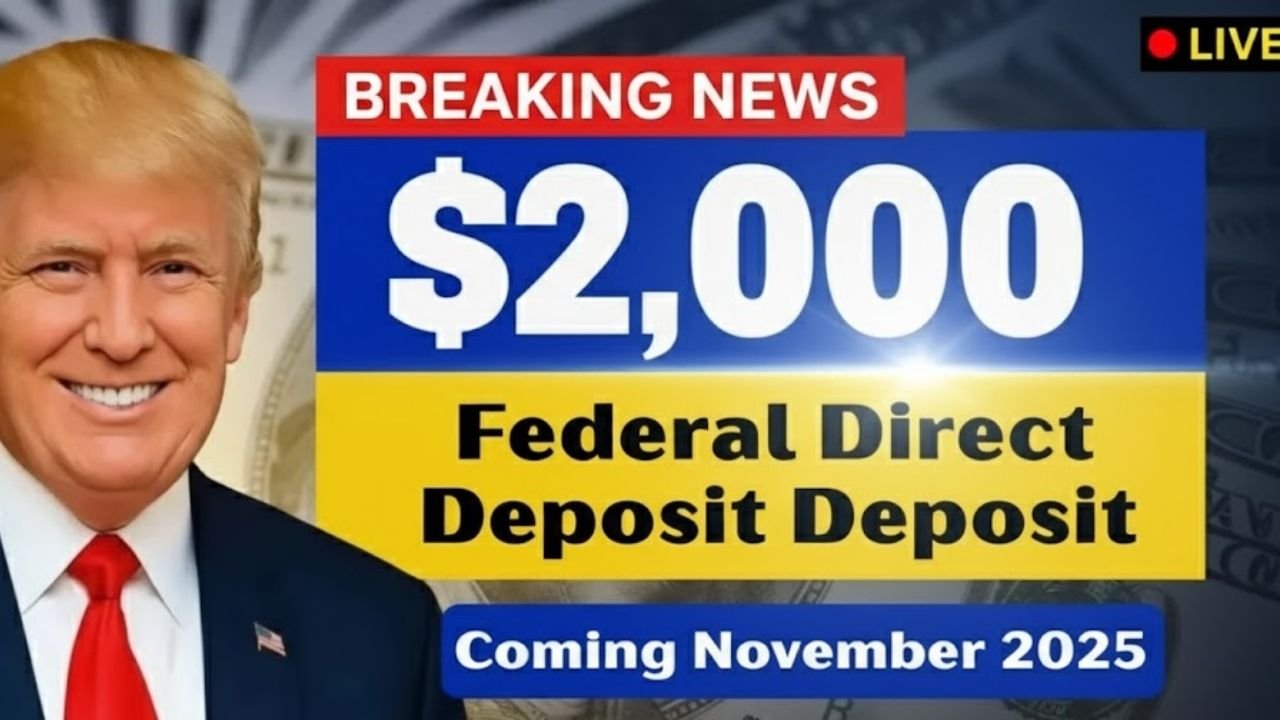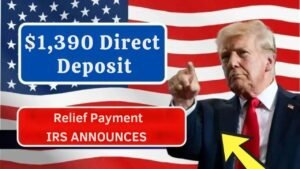Millions of Americans are set to receive a $2,000 direct deposit in November 2025, offering much-needed relief amid rising costs for groceries, rent, utilities, and healthcare. This one-time federal payment aims to support seniors, low-income families, veterans, disabled individuals, and working households during a challenging economic period. Here’s a complete guide to eligibility, payment schedules, and IRS instructions to help you stay prepared.
What Is the $2,000 Direct Deposit?
The $2,000 direct deposit is a one-time federal relief payment designed to help Americans cover essential expenses. It is not a recurring benefit, tax refund, or Social Security increase.
Key Points:
- Administered by the IRS and the U.S. Treasury
- Delivered automatically to eligible recipients
- Provides temporary financial support for households facing inflation and high living costs
This payment is especially helpful during the holiday season, when household expenses tend to rise.
Who Qualifies for the $2,000 Payment?
Eligibility is based on citizenship, income, and federal records.
1. Citizenship or Legal Residency
- Must be a U.S. citizen or a lawful permanent resident
- Requires a valid Social Security Number (SSN)
2. Income Eligibility
Eligibility is determined by your 2023 or 2024 tax return:
| Filing Status | Income Limit for Full Payment |
|---|---|
| Single | $75,000 or less |
| Married Filing Jointly | $150,000 |
| Head of Household | $112,500 |
Partial payments may be issued to those earning above these thresholds.
3. Automatic Eligibility for Federal Benefit Recipients
If you receive:
- Social Security (SS)
- Supplemental Security Income (SSI)
- Social Security Disability Insurance (SSDI)
- Veterans Affairs (VA) benefits
…you automatically qualify. These recipients typically receive payments in the first distribution phase.
4. Tax Filers
Those who filed 2023 or 2024 tax returns will be reviewed automatically.
5. Non-Filers
Individuals with low or no income may need to use the IRS Non-Filer Tool when available to ensure eligibility.
When Will Payments Be Sent?
The IRS plans a phased distribution:
- Phase 1 (Nov 10–18, 2025): Social Security, SSI, SSDI, VA beneficiaries
- Phase 2 (Nov 19–28, 2025): Eligible taxpayers with direct deposit on file
- Phase 3 (Late Nov–Early Dec 2025): Paper checks or EIP debit cards for those without direct deposit
Direct deposit ensures faster delivery than paper checks.
How Will You Receive the Payment?
Payments are automatic, no application needed. Delivery methods include:
- Direct Deposit: Fastest, sent to your bank account
- Paper Check: Mailed to your IRS or SSA address
- EIP Debit Card: For recipients without bank accounts
IRS Instructions for Smooth Payment
To avoid delays, the IRS recommends:
- Update Tax Records: Ensure your 2023 or 2024 returns are filed and accurate.
- Keep Bank Info Updated: Update through IRS online account, SSA, or VA portal.
- Avoid Scams: The IRS never calls, emails, or texts requesting personal or banking details.
- Track Payment: Use the IRS “Get My Payment” tool to monitor status.
Why the $2,000 Payment Matters
This payment helps families cover:
- Rent or mortgage
- Utilities and heating
- Medical expenses and prescriptions
- Groceries and essentials
- Fuel and transportation costs
It also provides a financial cushion for seniors and families living paycheck to paycheck, supporting spending during the holiday season.
FAQs
1. Who qualifies for the $2,000 payment?
U.S. citizens and legal residents who meet income limits or receive federal benefits (SS, SSI, SSDI, VA).
2. When will payments arrive?
Between Nov 10–28, 2025, depending on payment method.
3. How will I receive it?
Direct deposit, paper check, or EIP debit card.
4. Do I need to apply?
No. Payments are issued automatically.
5. Is the payment taxable?
No, it is non-taxable and won’t affect your tax return.
6. What about non-filers?
Use the IRS Non-Filer Tool when available to ensure eligibility.
Conclusion
The $2,000 direct deposit in November 2025 is a crucial relief measure, helping Americans manage essential expenses and stabilize finances during a period of economic pressure. Keeping IRS and SSA records updated and tracking payments via the official IRS portal ensures you receive your funds on time. For many households, this one-time support brings much-needed financial security and peace of mind heading into the winter months.





